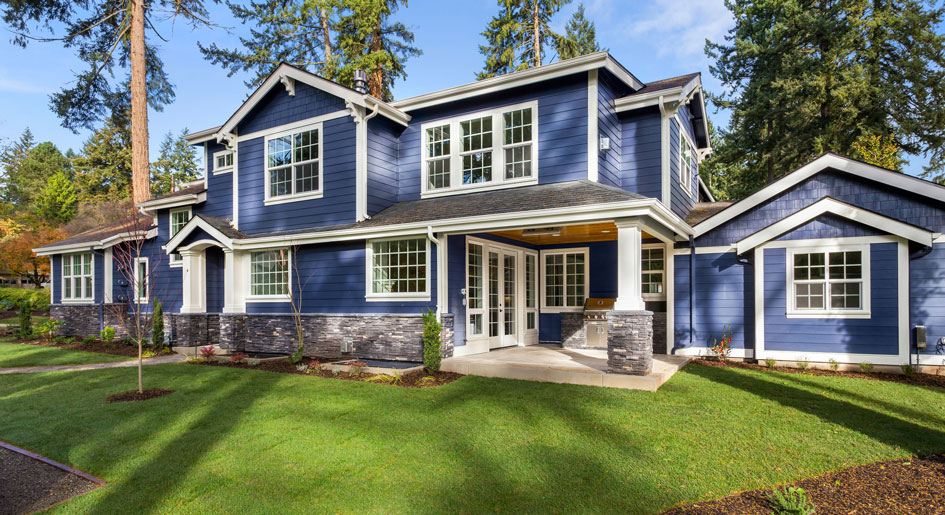Research Brief
Housing
September 2024

Homebuying Out of Reach for Many
Households Despite Lower Debt Costs
Mortgage rate plunge fails to stoke buyer demand. Existing home sales decreased by 3.3 percent year over year in August 2024 to an eight-month low. That pullback transpired in the midst of substantial downward movement in the average 30-year fixed-rate mortgage. The gauge plummeted by 60 basis points year over year to 6.5 percent in August and slackened by an additional 40 basis points through mid-September. Even so, record-high home prices are maintaining historic homebuying barriers. The median sale price of an existing single-family house rose by 2.9 percent year over year to $411,500 in August, reaching a new all-time high. Valuations continue to be reinforced by very low for-sale inventory. The number of existing homes on the market held under 1.1 million for a fifth-straight month — a stark change from the two-decade average of more than 1.9 million houses.
 Listers retain leverage, but sale timelines are lengthening. Roughly 48 percent of homes for sale in August had been on the market for at least 60 days — up about 500 basis points from one year ago, according to Redfin. This is contributing to a higher month's supply measure at the current sales rate. Although houses available for purchase are taking longer to secure a buyer, the generally meager stock of listings is giving sellers the impetus to avoid major price discounts. Some downward pressure could emerge in the coming months, but the lack of competition makes a widescale reduction unlikely. As such, high prices will continue to offset relief from lower mortgage rates, keeping homeownership out of reach for a meaningful share of U.S. households.
Listers retain leverage, but sale timelines are lengthening. Roughly 48 percent of homes for sale in August had been on the market for at least 60 days — up about 500 basis points from one year ago, according to Redfin. This is contributing to a higher month's supply measure at the current sales rate. Although houses available for purchase are taking longer to secure a buyer, the generally meager stock of listings is giving sellers the impetus to avoid major price discounts. Some downward pressure could emerge in the coming months, but the lack of competition makes a widescale reduction unlikely. As such, high prices will continue to offset relief from lower mortgage rates, keeping homeownership out of reach for a meaningful share of U.S. households.
Luxury tier apartments stand to benefit. Based on preliminary August data, Class A rental vacancy held unchanged for a fourth-straight month, while the share of units offering concessions fell 110 basis points below the March 2024 peak. These improvements are a byproduct of the challenging transition to first-time homeownership, as many higher-income households are opting for luxury-tier apartments instead. The active multifamily construction pipeline is historically large; however, robust demand for Class A units is helping to neutralize supply pressure.
Developing Trends
New home sales are motivating a rise in development. While buyer activity for existing houses has eased, the trend within the newly-built segment stands in contrast. New home sales increased by 9.1 percent year over year in August, aided by the median sale price dropping by 4.7 percent annually. Greater purchase activity has led to an uptick in groundbreakings, with single-family project starts growing by 5.2 percent year over year in August and exceeding the two-decade average by about 120,000 houses. The eventual inflow of these dwellings could help reduce the shortage of existing homes, as owners have more options to move up the quality stack. Still, that change could be slow to play out, with potential sellers being reluctant to trade out lower-rate mortgages.
Massive shift in apartment construction is emerging. Multifamily completions exceeded new permits by more than 50 percent in August 2024 — the largest gap since February 2010. This signals that deliveries are likely peaking, while the forward-looking pipeline is shrinking. The active pipeline remains exceedingly large, but supply pressure could notably fade in the coming years.
3.6 |
2.9 |
|
Month's Supply of Existing Homes at |
Month's Supply of Existing Homes at |
* Home sales as of August; Mortgage rate as of Sept. 19
Sources: Marcus & Millichap Research Services; Capital Economics; Freddie Mac; Moody’s Analytics; Mortgage Bankers Association; National Association of Home Builders; National Association of Realtors; RealPage, Inc.; Redfin; U.S. Bureau of Labor Statistics; U.S. Census Bureau; Wells Fargo
TO READ THE FULL ARTICLE

